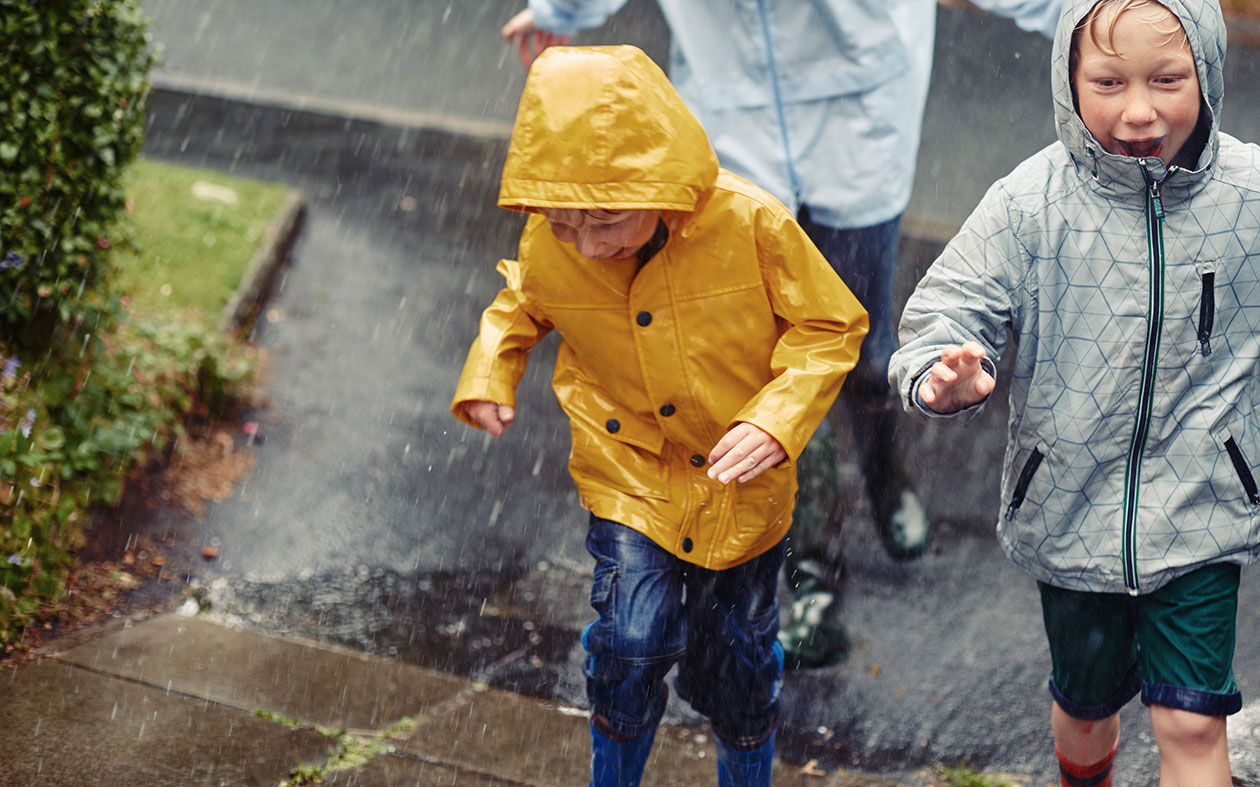
How can I protect my home during a storm?
Flooding and storms can cause serious damage to your home. Here's what you should think about if a storm is on the way.
Published:11 October 2022
Protecting your home
In the event of extreme weather, there are a number of simple steps you can take to help reduce the amount of damage caused to your home.
1. Know your area's flood warning system
It's crucial that you and everyone in your household understand how your local flood warning system works, including how warnings are issued. Find out this information from your local authorities or visit the Environment Agency website for a host of helpful resources.
2. Secure your garden equipment
Outdoor furniture such as chairs and tables could get blown away in a storm, so find a way of securing them - bolt them down if you can. You should also store any garden tools or equipment in the garage, if you have one, or inside the house.
3. Store away valuables
Move all of your valuables - including electrical and precious items - upstairs, or into the attic if you have one. Put all important documents such as bank statements, insurance policies, identification and wills into plastic bags and find a safe, dry place to keep them.
4. Move your furnishings
Floodwater could ruin your rugs, curtains and soft furnishings, so keep them out of harm's way by storing them upstairs or as high up in your home as possible. You may want to roll up rugs so they are easier to move, and wrap curtains around the curtain pole so they are far from the water.
5. Weigh down furniture
In the event of severe flooding, water could carry your furniture about your home and cause even more damage. Weigh down all the pieces that are too heavy for you to move upstairs to prevent this from happening, and move them away from the walls to speed up the drying process after the flood.
6. Prepare a flood emergency kit
Having an emergency stash of supplies could help keep you and your family safe and warm during a flood. In your disaster kit, you may want to include first aid equipment, bottled water, food, a torch (in case you lose power), an emergency contacts sheet, prescribed medication, blankets, clothing, insurance documents and money. If you have infants or elderly people in your household, you should also pack any special items they may need.
7. Check your home insurance
Home insurance is an essential for anyone living in a high-risk flood area, and you may want to get both buildings insurance and contents insurance for maximum protection. Make sure that when you take out your plan, you tell your provider about your risk, as this could affect your premium and could mean your policy becomes void if you don’t.
8. Turn off supplies
Flooded electrical goods are a fire hazard, so you'll need to disconnect your electrical appliances and gas and water supplies, and unplug all electrical items. Another top tip is to place your appliances on bricks to keep them away from the water. Don't switch any of your supplies back on until the flooding is over and they have been checked by a professional.
9. Trim back trees and bushes
In the event of strong winds and lightning strikes, flying branches could smash your windows and damage your car. Trim back any small trees or bushes surrounding your home to minimise the chances of this happening.
10. Stock up on sandbags
Sandbags are an effective defence against floods. They can be propped up against your doors and windows, and placed in your sinks and toilet bowls to block the flow of water from spreading. Your local authority should provide sandbags for free, but you can also get hold of them from building merchants. Bear in mind that when a flood occurs, demand for sandbags will be high, so during wet spells keep an eye out for any major flood warnings and stock up in advance.
11. Install non-return drainage valves
To prevent wastewater from flowing back into your home during a flood, fit your drainpipes with non-return drainage valves. If you can't get hold of these in time, you could also plug water inlet pipes with any old towels or cloths you don't mind sacrificing.
12. Learn DIY tricks
You don't have to be a DIY expert to protect your home. There are various flood defence products that are easy to install ahead of time, such as window and door guards, air brick covers and freestanding barriers. Research your options online or ask the specialists at your local DIY store for product recommendations and installation tips.